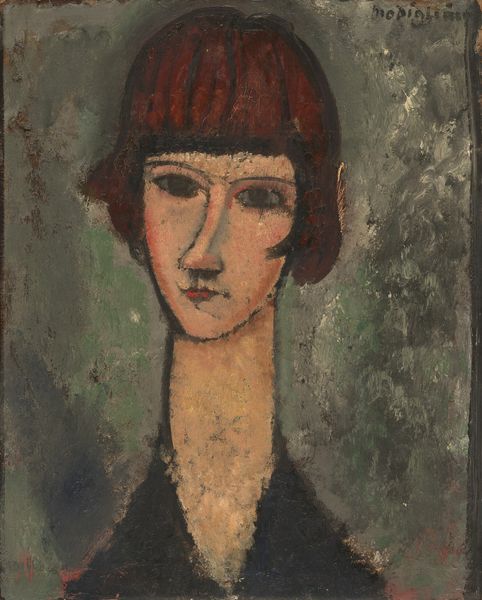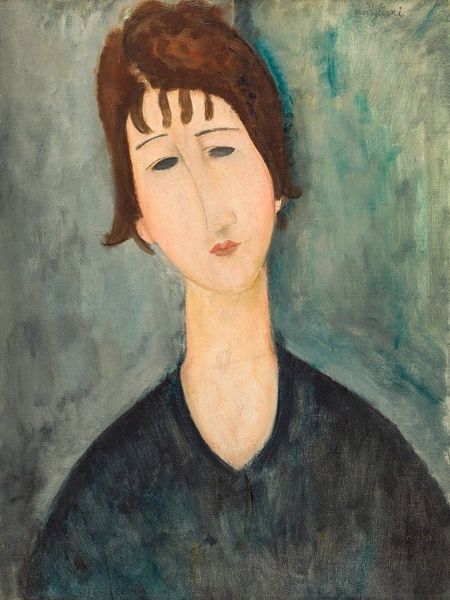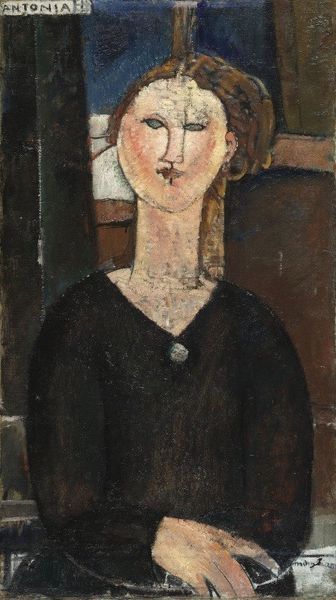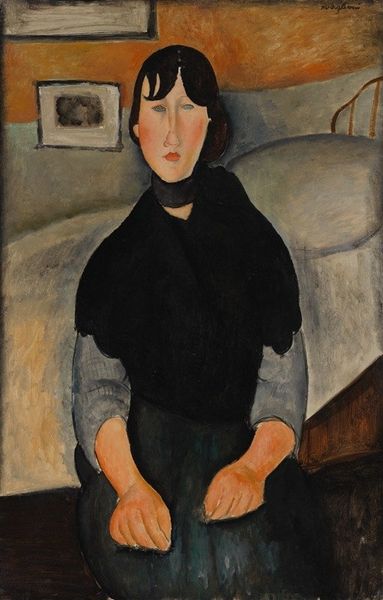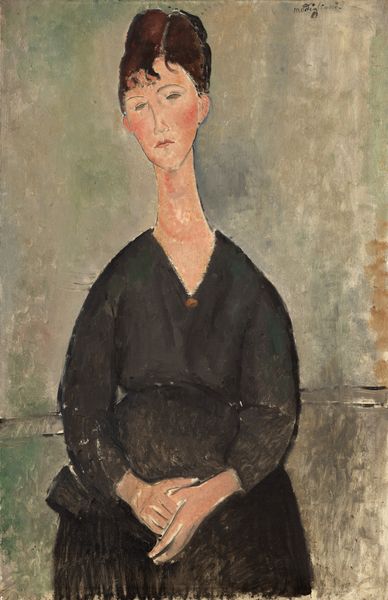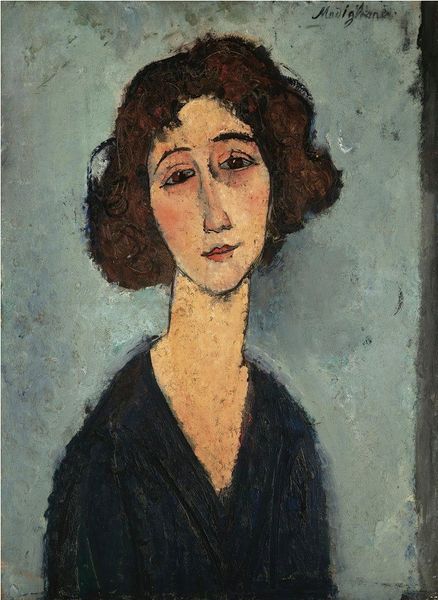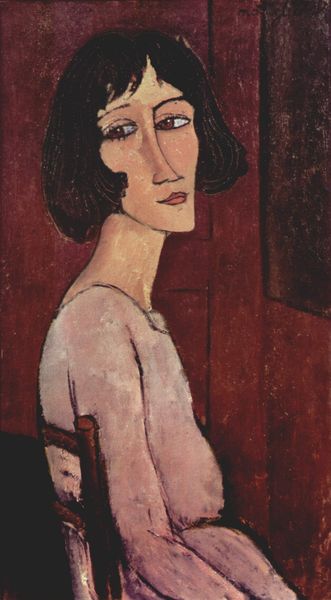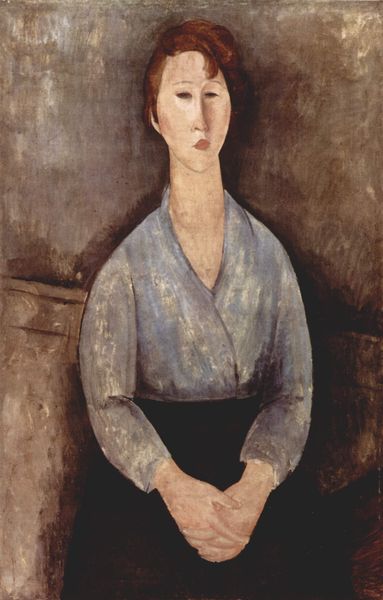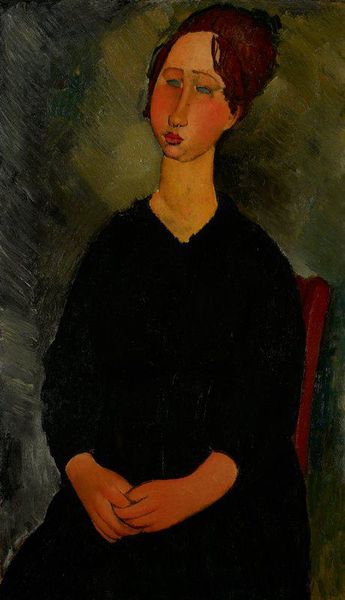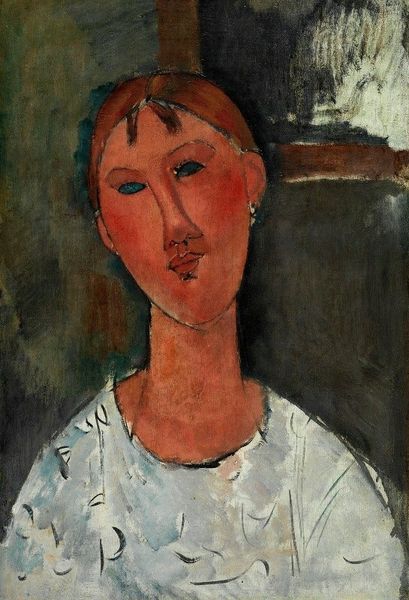
Dimensions: support: 806 x 597 mm frame: 992 x 795 x 100 mm
Copyright: CC-BY-NC-ND 4.0 DEED, Photo: Tate
Curator: Amedeo Modigliani's "Portrait of a Girl," currently housed at the Tate, immediately strikes me with its somber mood, almost melancholic. Editor: I agree. And one cannot ignore how Modigliani portrays the sitter's identity within the broader context of early 20th-century Parisian society. Her gaze, her attire… Curator: Yes, her slightly downturned eyes and that heavy brown coat, it all speaks to a certain suppression, perhaps? Is Modigliani offering a commentary on the limited roles available to women? Editor: Perhaps. Or consider Modigliani's own position as an outsider. Did his own feelings of marginalization influence how he depicted others, especially women? It’s worth exploring. Curator: Certainly, viewing her as a symbol of societal constraints is a powerful reading. The portrait evokes a sense of empathy. Editor: Indeed. It's a compelling example of how personal and socio-political narratives intertwine within art. Curator: Ultimately, this painting invites us to consider the interplay between individual experience and the larger social forces at play.
Comments
tate 6 months ago
⋮
http://www.tate.org.uk/art/artworks/modigliani-portrait-of-a-girl-n04723
Join the conversation
Join millions of artists and users on Artera today and experience the ultimate creative platform.
tate 6 months ago
⋮
By the time Modigliani painted this portrait he had developed his distinctive style of representing the figure. This woman’s elongated neck and stylised features embody his personal vision of beauty. It derives from his interest in a wide variety of arts then considered to be ‘primitive’, including African carvings and Cambodian sculptures, as well as the thirteenth-century paintings and sculpture of his native Italy. He was invited by his friend Gino Severini to join the Futurist art movement which celebrated the dynamism of modern life. Modigliani preferred instead to pursue his own artistic development. Gallery label, October 2009
